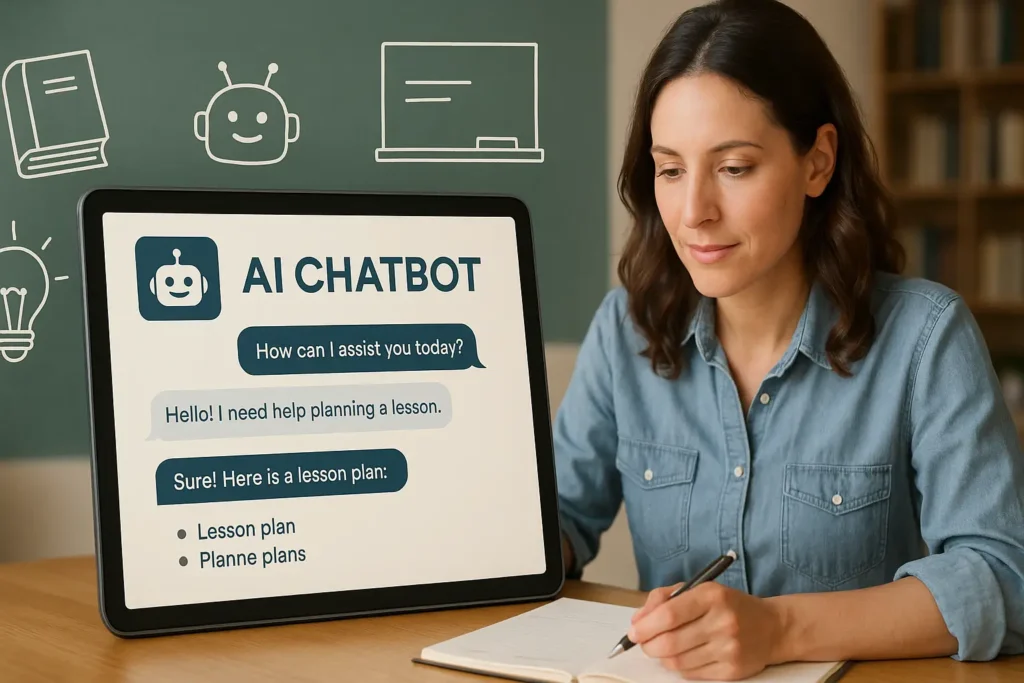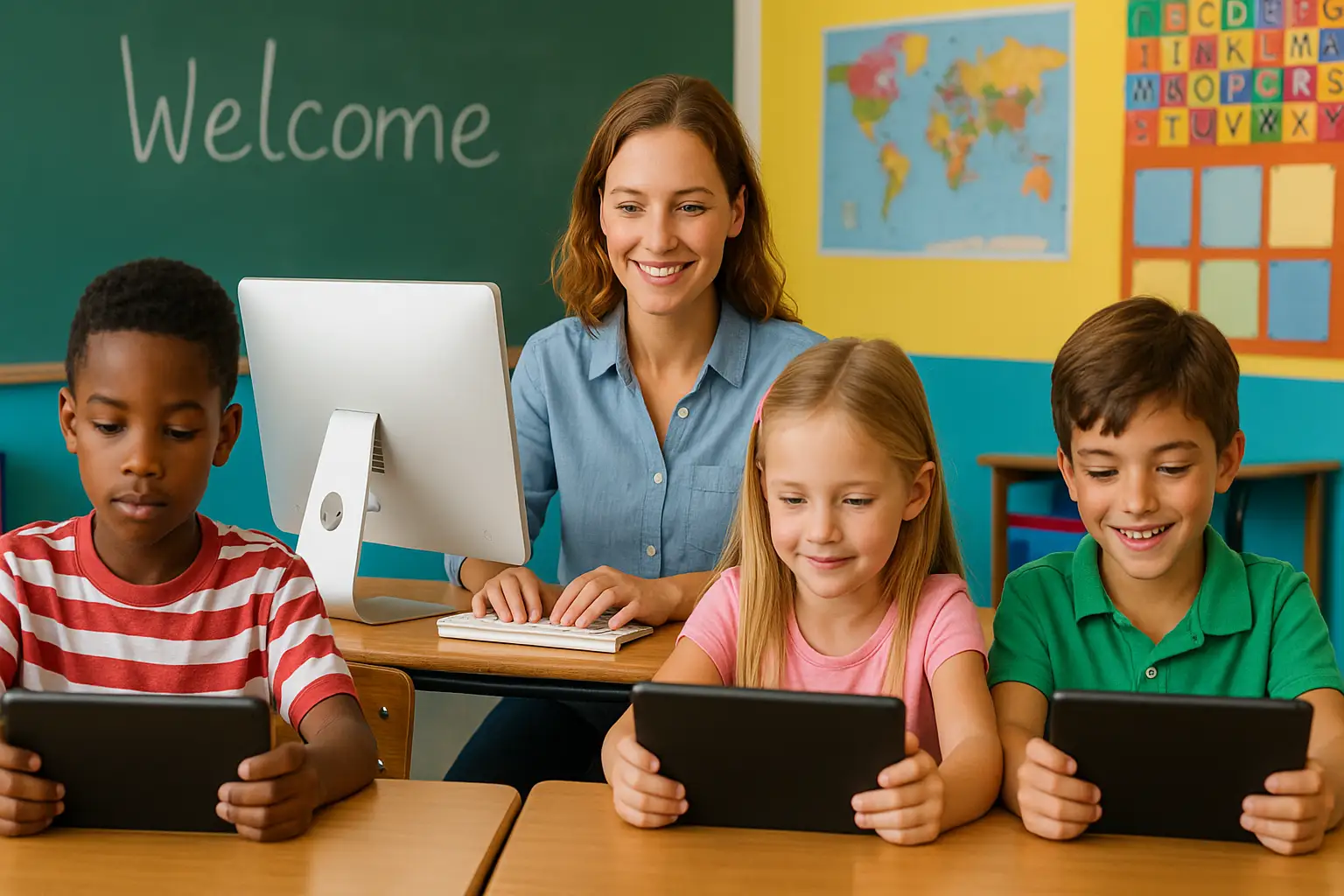Artificial Intelligence (AI) might sound like something from the future, but it’s already part of our everyday lives—and yes, even in education! Whether you’re a teacher, school administrator, or someone simply curious about how technology can make learning better, AI can be a big help. And the best part? You don’t need to be a tech expert to start using it.
How the Practical Uses of AI in Education Are Changing Classrooms
AI is not just for tech companies or scientists. It’s being used in classrooms around the world to make teaching easier and learning more fun and personalized. From helping with lesson planning to correcting student assignments, there are many ways to apply AI today, even with free tools available online.
What Is AI and Why Should Teachers Care?
Let’s simplify things: Artificial Intelligence is when machines learn to do things like a human brain. For example, when you use voice typing on your phone or get a movie suggestion on Netflix, that’s AI working.
Now, think about this: what if you had a tool that could help you plan your classes faster, understand each student’s difficulties better, and even correct essays? That’s exactly what AI can do for education.
AI in Lesson Planning: Save Time and Boost Creativity
One of the biggest challenges for teachers is time. Planning engaging and effective lessons takes hours. But tools like ChatGPT (https://chat.openai.com), Curipod (https://curipod.com), and MagicSchool.ai (https://www.magicschool.ai/) can generate lesson ideas, quizzes, and activities in minutes.
You just type what you need—say, “a fun math game for 4th grade about multiplication”—and the tool creates a full activity plan. Isn’t that amazing?
And if you’re stuck on how to teach a difficult subject, AI can give you creative suggestions based on what other teachers have done.

AI for Personalized Learning: Helping Every Student Succeed
Every student learns in their own way. Some are visual learners, some prefer reading, and others need hands-on experience. AI can help by analyzing how each student performs and offering personalized activities or content.
For example:
- Khan Academy’s Khanmigo (https://www.khanacademy.org/khan-labs) gives students tutoring based on their level.
- Duolingo adjusts its language lessons depending on how well a student is doing.
- Google Classroom’s add-ons can suggest resources based on students’ grades.
With AI, no one is left behind. It spots learning gaps early and supports each student individually.
Correcting Work and Giving Feedback Automatically
Correcting piles of assignments is exhausting. But with AI, that task becomes lighter. Tools like:
- Grammarly (https://www.grammarly.com) check grammar and spelling instantly.
- QuillBot (https://www.quillbot.com) helps students improve writing and rephrase sentences.
- MagicSchool.ai also creates rubrics and evaluates essays.
These tools don’t replace the teacher, but they do help you give faster, more accurate feedback, saving hours of correction time.
👉 Discover how teachers are adapting to AI in education with simple tools, real stories, and practical strategies for the classroom.
Classroom Management and Communication Made Easier
AI can also help you manage your classroom better. For example:
- Otter.ai (https://otter.ai) can transcribe meetings or parent-teacher conferences.
- Synthesia (https://www.synthesia.io) allows you to create video messages or lessons quickly.
- Tactiq (https://tactiq.io) records Google Meet conversations and highlights key points.
With AI, communication becomes clearer and more efficient—for you, your students, and their families.
Overcoming Resistance: “But I’m Not Good With Technology!”
This is a very common concern. But here’s the truth: you don’t need to be an expert to use AI. Most tools are as simple as using WhatsApp or Google.
Start small. Try one tool, maybe just to plan a class or correct an assignment. Step by step, you’ll feel more confident—and you’ll notice how much time and stress you save.
Practical Tips for Using AI in Your Teaching Routine
Here are some beginner-friendly ways to start:
- Use ChatGPT to brainstorm lesson ideas or write learning objectives.
- Try MagicSchool.ai to create differentiated activities for mixed-ability classrooms.
- Let students use Grammarly before submitting their writing.
- Experiment with creating a short video lesson using Synthesia.
The secret is to test and adjust until you find what works best for your reality.
Key Points About Practical Uses of AI in Education
- AI saves time in lesson planning and correction.
- It helps personalize learning for every student.
- Free tools like ChatGPT and Grammarly are easy to use.
- You don’t need to be tech-savvy to get started.
- AI improves communication with students and families.
- It helps identify and address learning gaps faster.
Conclusion
Artificial Intelligence is no longer a distant dream—it’s here, and it’s already helping thousands of educators around the world. With the right tools, you can simplify your routine, reach students more effectively, and focus on what really matters: teaching with heart and purpose.
You don’t need to do it all at once. Choose one practical use of AI, try it out, and see the difference. Technology doesn’t replace the teacher—it empowers them.
Did you like these tips? Leave a comment below and tell us which AI tool you’re most curious to try in your classroom!

